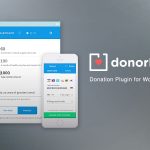No products in the cart.
Bounce Rate, Why is it Important, and How Can You Lower it?
When you try to optimize your website sales conversion rate, turning visitors into paying visitors, you may use some web analytic tools such as Google Analytics. There on your dashboard, you will find some strange percentage number called bounce rate.
It is okay if you don’t quite understand about what is bounce rate yet since we are here for you to explain about what is it, why is it important and how can you lower it to optimize conversion rate.
What is bounce rate?
Google Analytics defines bounce rate as a session that triggers only a single request to the Analytics server, such as when a user opens a single page on your site and then exits without triggering any other requests to the Analytics server during that session.
These requests to the server, in theory, include;
- Land on your website (first request)
- Play a video on the page (second request)
- Download a file (third request)
When a visitor does more than one request to the server, this is not counted as bounce by Google algorithm. So if you visit a page resulted from google search, then close the page within second without navigating to other pages of the website or interacted with anything on the website.
You came, you saw, and you went somewhere else. Then you are contributing to making that website bounce rate higher.
Many tips around the internet will recommend you to lower your bounce rate. Lower bounce rate is good and a higher bounce rate is bad. But is it so? Well, let’s elaborate on it.
Why bounce rate is important?
By knowing the bounce rate on your web analytics tools, will allow you to understand how is the behavior of your website visitors. Besides, a high bounce rate will make search engines websites such as Google will think that your website is bad. Hence, these search engines will drop your rank.
SEMrush even mentioned that bounce rate is 4th ranking factors on Search Engine Results Pages (SERPs). Since 90% of the online experience begins from the search engine page, rank on the search engine page is very important. Many factors can cause the bounce rate to get higher.
Some websites are using SEO keywords with high traffic opportunities, the problem is that these keywords sometimes doesn’t relevant to the content. These common mistakes make the visitor confuse. When a visitor googled for “how to paint a car” for example, there is a possibility visitor will land on “how to paint a cake”.
If this happens, that visitor obviously will bounce back and return to the search page for another option. Other various reasons may make bounce rate higher, some of them worth tom mention:
- Misleading page title
- The page doesn’t contain request generators element
- The website is poorly designed
- The website runs very slow
- Too many ads
- etc
How to Lower Bounce Rate?
Now we know that the bounce rate is important that you should keep it as low as possible, but is there effective ways we can do to lower bounce rate?
Here are some things you need to pay attention to if you want to lower the bounce rate:
1. Content’s readability
There are many pages on the internet that lack of readability. Simple, readable, and legible content will improve the user experience. This will make visitors explore more. You can start to edit your writings to engage more attention. There are things to improve readability, some of them are:
- Dumbing down your content. Relax, it doesn’t mean you make people stupid. People are smart, but they also busy. So you can use easy language, short sentences, or just imagine that you are writing for 5th grader.
- Use a larger font. The use of larger font will make your text slightly easier to read.
- Use a good contrast between the text and background color. Just avoid vivid colors such as pink with a yellow background. The black colour is preferable for writing. People already get used to it.
- Use narrow lines. It is easier to read shorter sentences and shorter lines. You can manage to make the column narrower, just like newspapers and magazines. They do that in purpose.
- Use bullet points. Exactly like this. That’s why we use that too. It is much easier to read than using commas
- Use images. People love visuals, you can add one or two images on your page. But don’t insert too much since it will slow your page load. ·Infographics and videos may work as well.
2. Avoid using pop up ads unless your content is worth it
For example, you make a book that everybody wants then it is okay to use pop ads. People are busy so they don’t want to use pop-ups especially automatic pop-ups will annoy users, increasing the bounce rate. They came, they saw, they go.
3. Use a clustered server
By using more than one server for your website, your website will run smoother and faster. This will improve your website reliability and performance. Better user experience will eventually lower the bounce rate.
You can always try to check your page speed by using Pingdom. Just insert your website address there then you can see the performance grade. If your grade is C or worse, you may consider building a cluster.
4. Make your website interactive
After you created good writing with good readability, you can add some comment section or chatbox. People love to talk about their point of view. Make them comfortable by providing them a platform to discuss. You may add links to other articles or pages as well. Remember if you add external links, make it open new windows.
5. Mobile-friendly website
Almost 95% of people accessing the internet from mobile. Optimizing for mobile sites is mandatory. You can check whether your website is mobile-friendly here.
Optimizing the bounce rate for your website may need some time. Improving the user experience is the key to get a lower bounce rate to get better conversions. You have to focus on gradually increase the time visitors spending their time on your website.


